Author: Liliana Jaramillo, former CDF staff
For years, I have dedicated my work towards plant conservation in urban areas. However, a few months ago, my life had a sudden turn that brought me to the Galapagos islands. This archipelago, unlike big cities, has a major part of its territory devoted to conservation. Urban development is restricted to specific places on only four islands. Even though this is a dramatic change in my workplace, from a pavement jungle to remote places (such as this study site of the Galapagos Verde 2050 (GV2050) of the Charles Darwin Foundation, in the north of Isabela Island).
In reality both experiences have similarities as: working with people, understanding plant ecology and developing propagation experiments. In this way, we can say there are very important activities for species conservation in any place of the world.
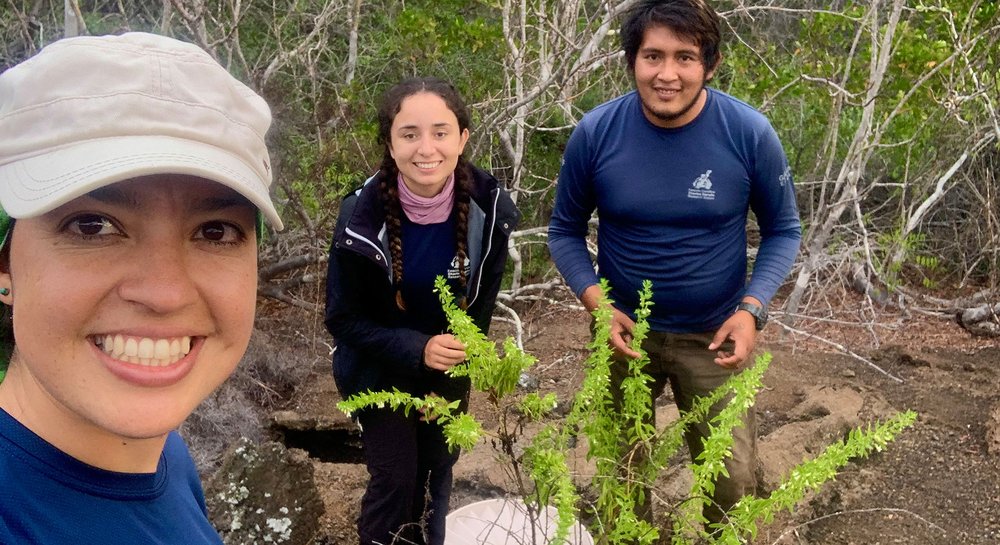
The experience that I am going to share, happened on a recent field trip where we went to monitor the only known population of Galvezia leucantha var. leucantha, on Isabela Island. Since 2016, GV2050 project has developed actions to prevent the extinction on Isabela island of this unique species from Galapagos. We learned that its main threat was introduced herbivores, goats (Jaramillo & Tye, 2018; León-Yánez, S., Tye, 2019). Goats were responsible for just a few remaining individuals Galvezia on the island. The goats were eradicated by 2005 by the GNPD (Galapagos National Park Directorate). Since the first actions, the GV2050 has taken the challenge to develop activities toward the conservation of this species, despite having a remnant population of only four individuals on the west side of the island, close to Tortuga Negra beach (Jaramillo et al., 2020). The work that these actions involve is arduous. For example, getting to this place is not an easy task. It is located 150 nautical miles from Santa Cruz Island, where the Charles Darwin Foundation is located (Dirección del Parque Nacional Galápagos, 2016), which demands an estimated time of more than 8 hours, depending on the boat travelled.
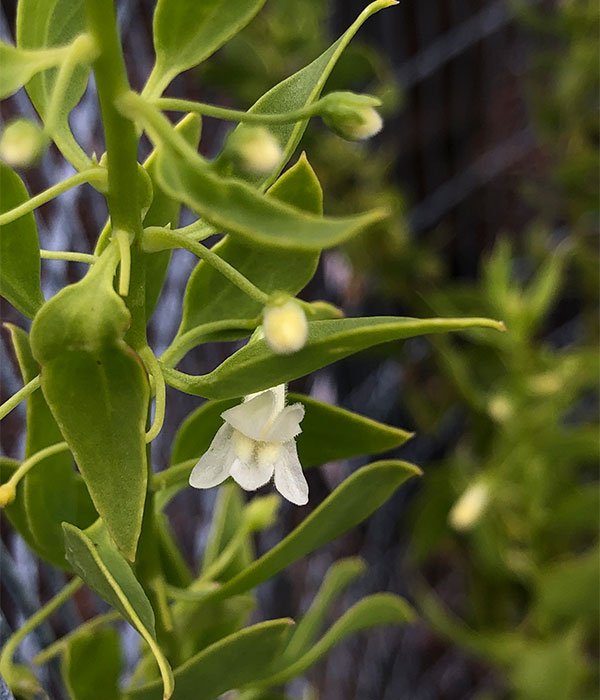
To fulfill this job, we have done several field trips, which despite being limited, have allowed us to make progress toward our goal: contributing to the recovery of this species population. In fact, after three years, the size of this small population has increased, slowly, but successfully, it has grown more than 5 times its original size. At the time, we have 23 individuals in the site, obtained through ex situ reproduction and repatriation of seedlings (Jaramillo et al., 2020) from the lab to the original site.
To organize and carry out these trips, we have different transportation means. To achieve this, we need close internal and external collaboration. Joint efforts between institutions facilitate our transportation and the successful activity execution at this remote site.
On this occasion, we were three members of the GV2050 research team in a motorboat from the GNPD, our most important partner and entity always willing to collaborate with our work. This field trip was coordinated during one of the routine trips that the GNDP does for the changing of the park rangers guard at Canal Bolivar. At this place the GNPD has an operations base. Our trip took approximately 9 hours, a bit more than estimated, due to a couple of unexpected events during the navigation.
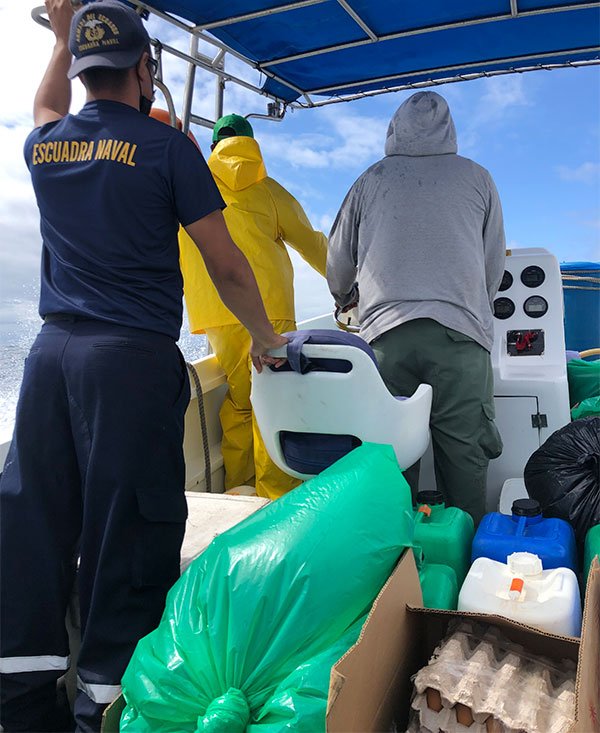
During this trip, I had the chance to see a new side of the archipelago. Isabela is an island that presents evidence of recent eruptions. We can see there a very diverse territory, which integrates lava flows and areas where the vegetation still remains. In this setting we can see the contrast between the green vegetation and the black dry lava. Cliffs can be seen; in these places the sea endlessly crashes against the rocks, shaping this beautiful island.
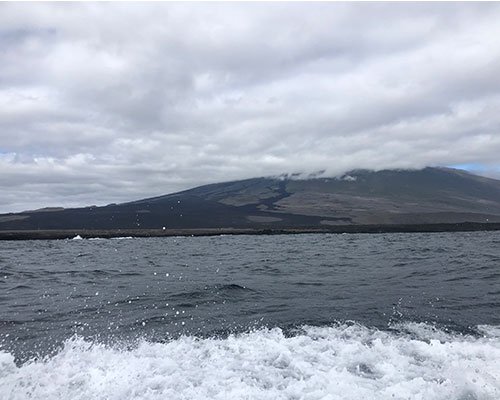
Once we got closer to our study site, we had limited time to do all that was planned, before the GNPD crew came back for us. Unexpected events on field trips always occur, and this time we only had one hour for monitoring and recording the condition of the G. leucantha population. Despite the hurry, I was very surprised when I got to this special place. I saw a bare area with red gravel and rocks, which gave the place a very special aspect, even comparable to another planet. And, as odd as this sounds, this is the favorite soil for the growth of our ‘Galvezias’ (Guzmán et al., 2017). When we arrived, in middle of this place, we found our plants scattered in the area. We hurried to record the measurements and data of each plant. Many of them were blooming and I had the feeling they were waiting for us to be appreciated.
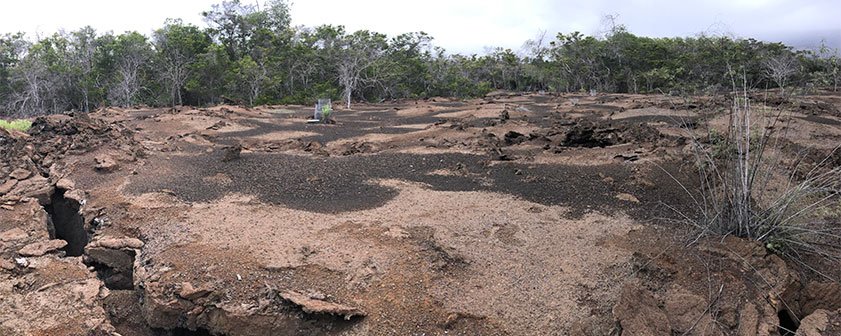
During our visit, we found a big surprise: it was a new seedling that germinated naturally. This was particularly interesting, knowing that all the young plants of this population have been germinated at the Charles Darwin Research Station and were taken back to the site afterwards. With this finding we started thinking that the probability of recruiting more individuals in this population is increasing. With the joy of witnessing progress, we continued our job and, as we advanced, we found one more and then other ones. In total we recorded eight new plants, growing naturally, hidden in cracks. It was very surprising for me to see, how in middle of this rough landscape, this new generation of Galvezia leucantha plants have germinated in natural conditions and are growing strong and vigorous.
This trip gave us the most encouraging news while working on the conservation of such a small population of plants. With the feeling of the accomplishing our duty, we finished recording the new plants found and hurried to return to our embarkation point. On the path to the meeting point, the sun set reminded us that the day was about to end.
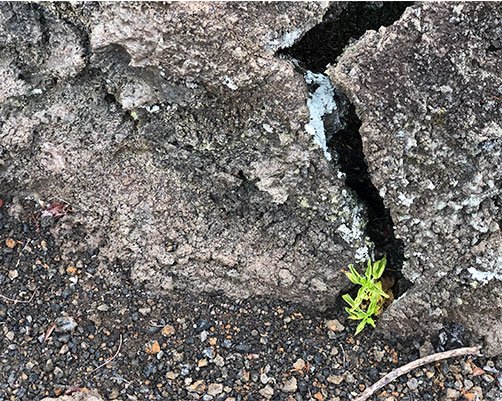
Soon, the motorboat came to pick us up to take us to the ‘Guadalupe River’, the GNPD ship, where we boarded to travel back to Santa Cruz. Still hurried, we found on board the park rangers team with whom we were going to travel, after their intense working days. This ship, as it is a bigger boat, took longer to return, nevertheless, our journey was more comfortable. During this journey, we shared anecdotes and stories with the ship’s crew and we also had the chance to rest. The journey took all night and the early morning. At 6 am I woke up to the sound of the anchor; we had arrived in Puerto Ayora. A long voyage but very satisfying.
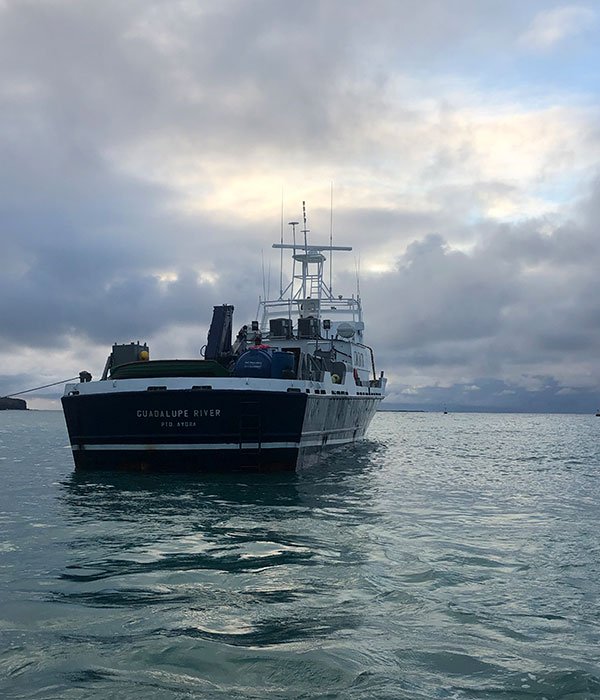
Finding breakthroughs in the process of recovery of an endangered species, motivates me to continue my job. Knowing that there are still many other species that have been affected directly or indirectly by human activities and invasive species, leaves much work to be done. Working in ecological restoration is not an easy task, it requires planning, persistence, lots of patience and funds, because this is a long and slow process. Nevertheless, I feel motivated thinking that our work contributes to the hope of living in a better world.
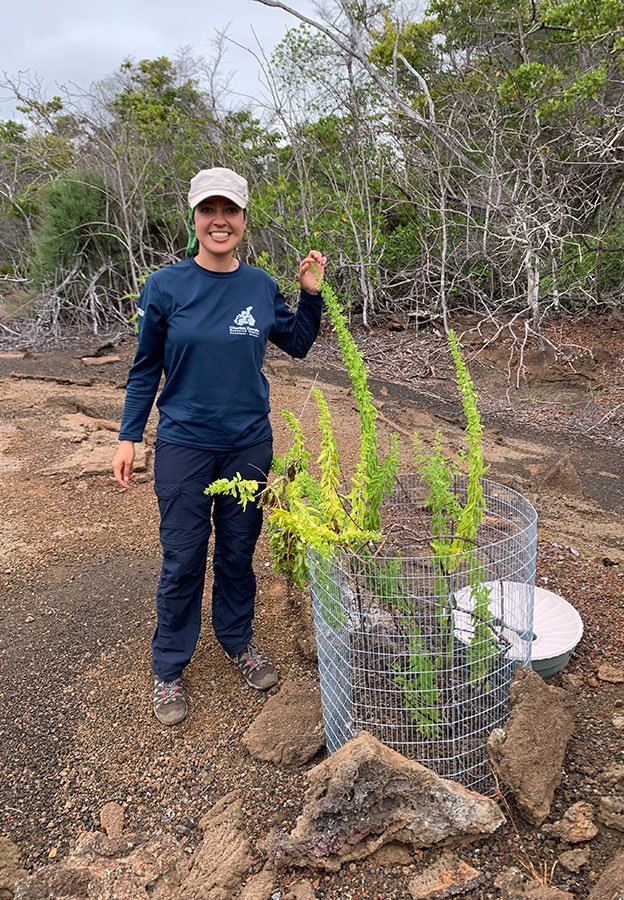
GV2050 project is implemented in collaboration with the Charles Darwin Foundation and Galapagos National Park Directorate. The project is financially viable thanks to the support of the COmON Foundation. We would like to thank the park rangers that support our work, and to the CDF team most notably Maria Jose Barragan, Isabel Grijalva, Leslie León and Patricia Jaramillo Díaz for their input on earlier drafts. This is just one of seven islands where the GV2050 project has implemented restoration work, you can read more about some of our results of the endemic Opuntia species restoration here: https://peerj.com/articles/8156/ and El Proyecto Galapagos Verde 2050 Vol. 1
References
Dirección del Parque Nacional Galápagos. (2016). Base de Canal Bolívar. Oficinas y Bases Del Parque Nacional Galápagos. http://www.carlospi.com/galapagospark/institucion_bases_canal_bolivar.html
Guzmán, B., Heleno, R., Nogales, M., Simbaña, W., Traveset, A., & Vargas, P. (2017). Evolutionary history of the endangered shrub snapdragon (Galvezia leucantha) of the Galápagos Islands. Diversity and Distributions, 23. https://doi.org/10.1111/ddi.12521
Jaramillo, P., & Tye, A. (2018). Galvezia leucantha var. leucantha. In Atlas (pp. 64–66).
Jaramillo, P., Tapia, W., Negoita, L., Plunkett, E., Guerrero, M., Mayorga, P., & Gibbs, J. (2020). The Galapagos Verde 2050 Project (Volume 1).
León-Yánez, S., Tye, A. (2019). Galvezia leucantha. Libro Rojo de Plantas Endémicas Del Ecuador. https://bioweb.bio/floraweb/librorojo
Plunkett, E. (2020). Saving a species from the brink of extinction: Galapagos Verde 2050. https://www.darwinfoundation.org/en/blog-articles/578-saving-a-species-from-the- brink-of-extinction-galapagos-verde-2050





